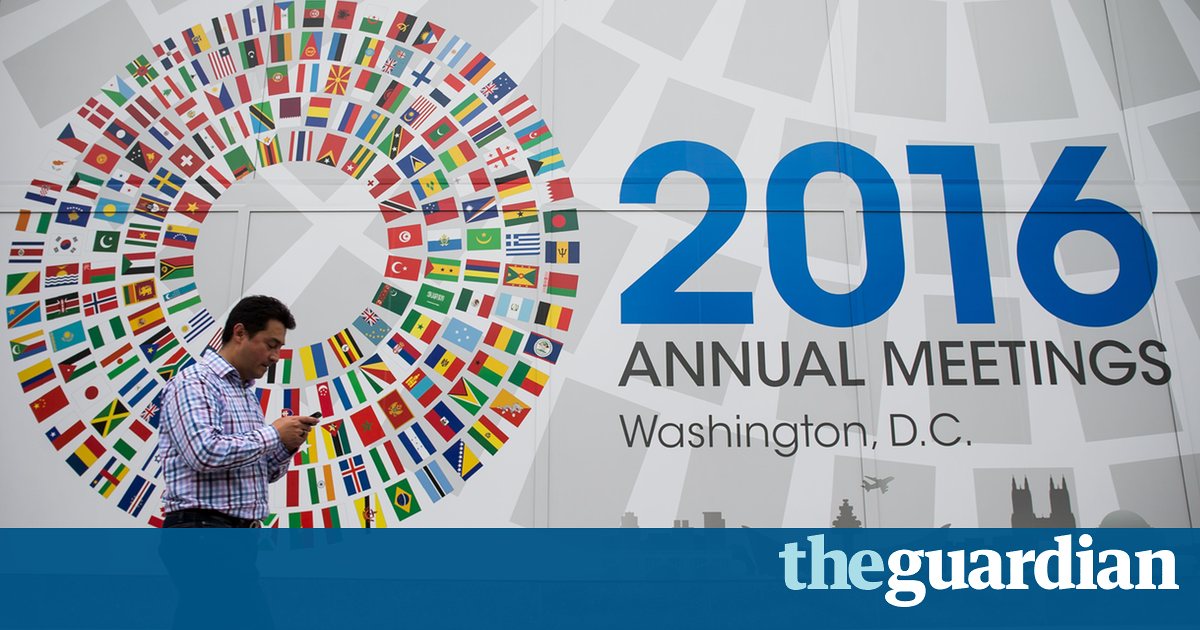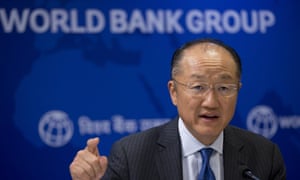World Bank renews drive against inequality

Report says faster growth and more anti-inequality measures would be needed to meet goal of eliminating extreme poverty and boosting pay.

The World Bank has called for a fresh drive to tackle inequality after warning that the gap between rich and poor risks thwarting its ambition of eliminating extreme poverty by 2030.
Ahead of its annual meeting with the IMF in Washington DC this week, the Bank said that the number of people living on less than $1.90 a day the accepted benchmark for extreme poverty had continued to fall despite the sluggishness of the global economy in the years after the financial crisis.
But it said faster growth and a range of anti-inequality measures would be needed to meet the twin goals set by its president, Jim Yong Kim: reducing poverty from just under 11% of the global population to 3% and boosting the incomes of the bottom 40% of the population in each country.
In the first edition of a new annual study Poverty and Shared Prosperity which will track trends in global poverty, the Bank said the number of people living on less than $1.90 a day had fallen by 100 million to 767 million between 2012 and 2013, the latest year for which comprehensive data is available.
Its remarkable that countries have continued to reduce poverty and boost shared prosperity at a time when the global economy is underperforming but still far too many people live with far too little, said Kim.
Unless we can resume faster global growth and reduce inequality, we risk missing our World Bank target of ending extreme poverty by 2030. The message is clear: to end poverty, we must make growth work for the poorest, and one of the surest ways to do that is to reduce high inequality, especially in those countries where many poor people live.

Progress in 2013 was due largely to developments in China, Indonesia and India leaving half of the worlds poor living in sub-Saharan Africa. Poverty rates have fallen to 3.5% in East Asia and the Pacific the region that includes China and to 15% in South Asia, the region that includes India, but remain at 41% in sub-Saharan Africa.
The Bank found that in 60 of the 83 countries studied, average incomes rose for the bottom 40% between 2008 and 2013 despite the deepest global recession of the post-second world war era.
Amid a growing backlash against globalisation driven by concerns that the rich have captured the gains of free trade, the Bank said global inequality had declined consistently since 1990. The narrowing of the gap has relied on fast growth in the worlds biggest developing countries, particularly China and India.
The Bank said within individual countries, the improvement had been patchier. In 34 of the 83 countries monitored, income gaps had widened since 2008, with incomes of the richest 60% rising more quickly than those of the poorest 40%.
After studying a group of countries including Brazil, Cambodia, Mali, Peru and Tanzania, the Bank said a six-pronged approach was needed to tackle inequality.
That means:
- early childhood action focused on better nutrition
- universal health coverage
- universal access to good schools
- cash transfers to poor families
- better roads and electrification
- progressive taxation to transfer resources from rich to poor.
Some of these measures can rapidly affect income inequality. Others deliver benefits more gradually. None is a miracle cure, said Kim. But all are supported by strong evidence, and many are within the financial and technical reach of countries. Adopting the same policies doesnt mean that all countries will get the same results, but the policies weve identified have worked repeatedly in different settings around the world.
Read more: https://www.theguardian.com/business/2016/oct/02/world-bank-renews-drive-against-inequality-imf